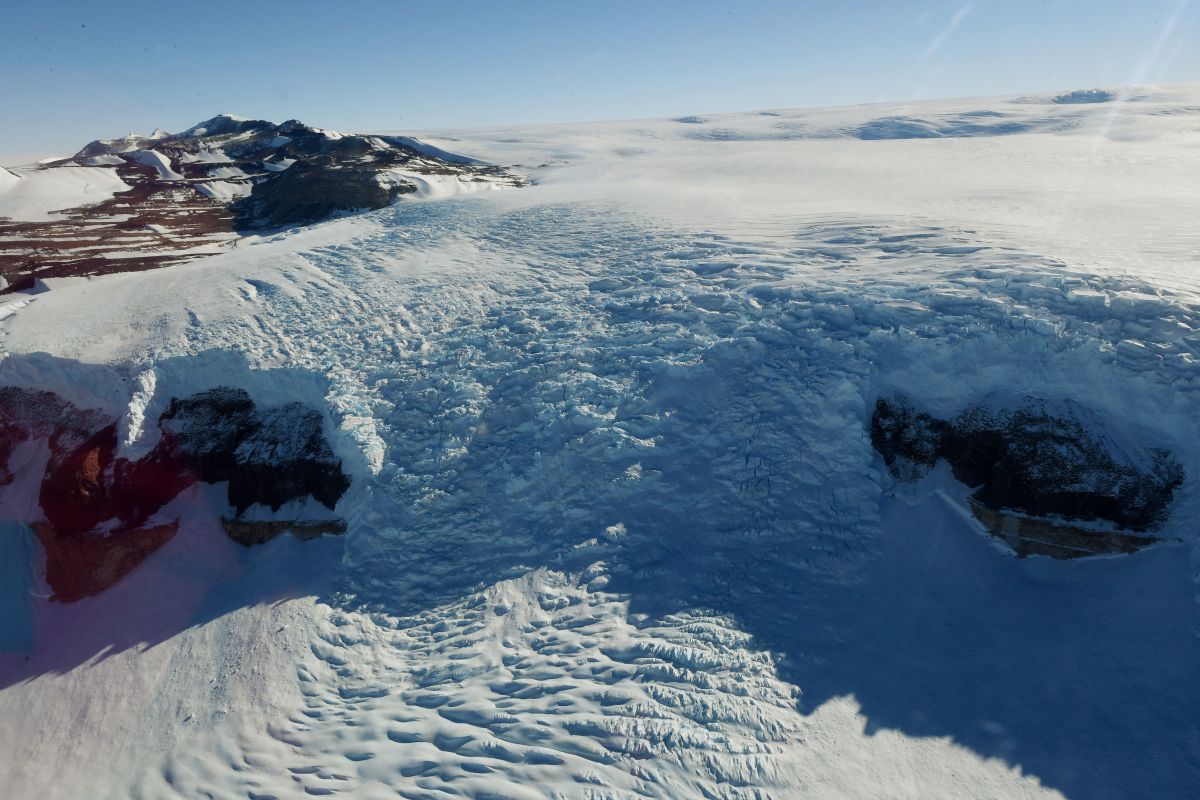On the world’s southernmost continent, temperatures are supposed to drop far below 0°C during May and June, and then stay incredibly cold until September. The record low recorded in Antartica was −89.2 °C, measured in July 1983 at Russia’s Vostok research station. But two years ago, Peter Kuipers Munneke, a glaciologist at the Institute for Marine and Atmospheric Research Utrecht, in The Netherlands, and his team saw something different. While studying the meltwater pooled on the Larsen C ice shelf, which is in danger of collapsing, their data showed higher winter temperatures than expected. Suddenly, their theory that almost all of the melting was taking place in the summer came into question.
“If there are positive temperatures, in Celsius, even far outside the summer months, even in the middle of winter, maybe there’s also melt happening in winter,” he explained to Atlas Obscura.
In a new paper, the scientists report that 20 to 25 percent of the ice sheet melt could be happening during Antartica’s winter. This is one of many surprising discoveries taking place on Antartica, the most challenging research environment on Earth. Down here the winters are dark, literally and metaphorically. Small groups of scientists stay on the continent through the season, dealing with vanishing daylight hours, ice sheets that stretch out over the ocean, and hard winds that knock over or freeze sensors. But scientists do find ways to gather information in this hostile environment, and when they do, they are usually rewarded with unexpected results.
Thanks for reading InsideHook. Sign up for our daily newsletter and be in the know.


















